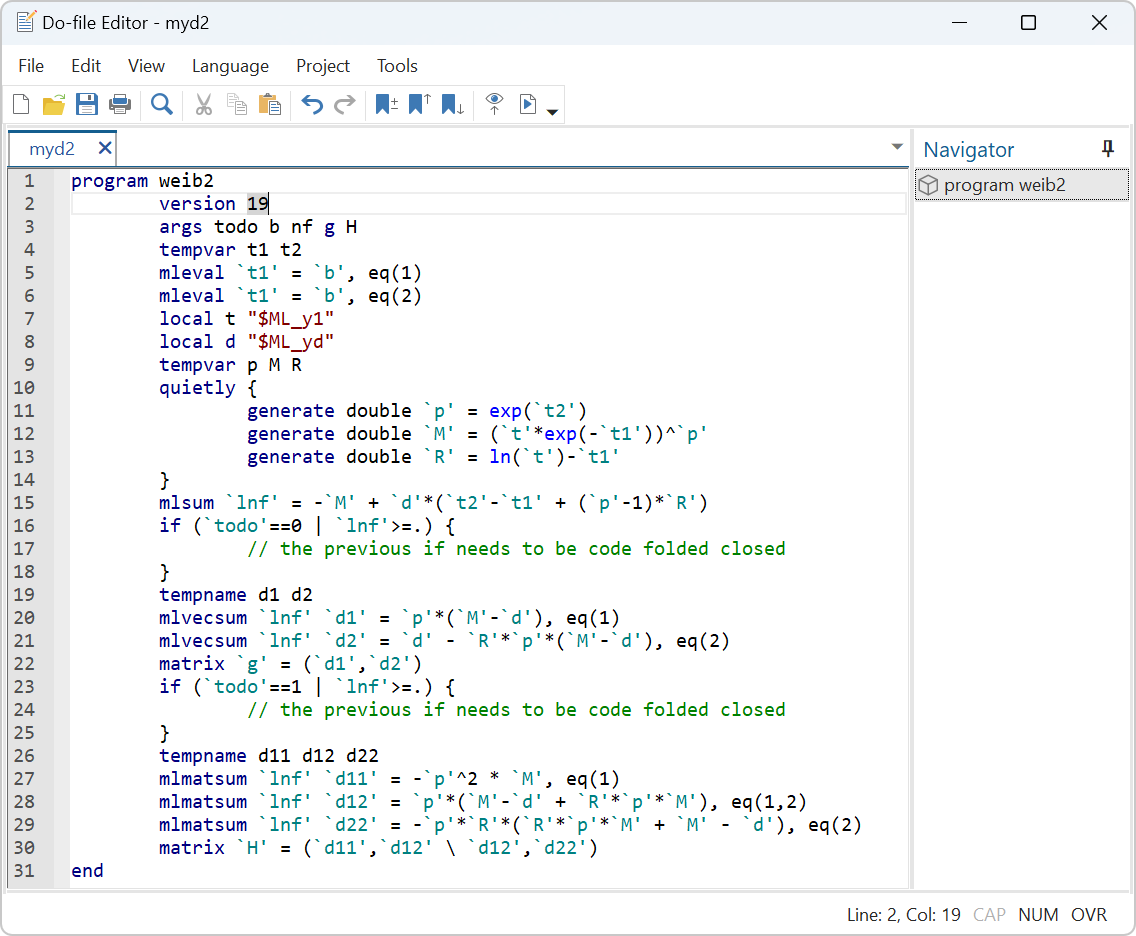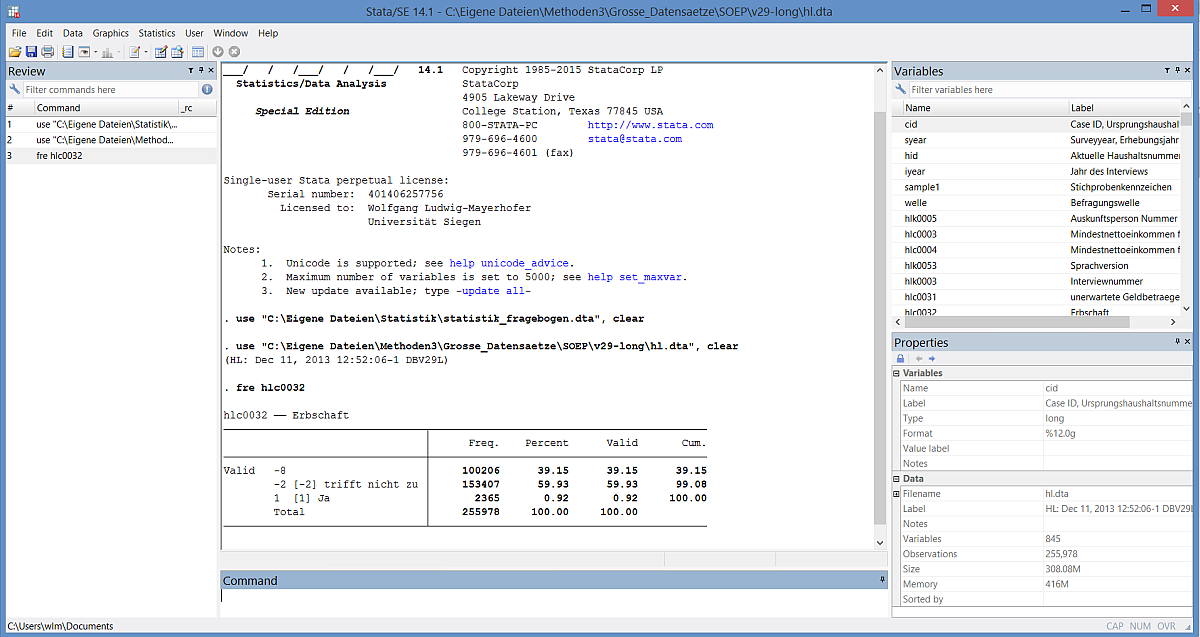

The format for datetime variables is called %tc (think ‘clock’). These formats all start with %t followed by a letter corresponding to the time unit: %td for days, %tw for weeks, %tm for months, %tq for quarters, etc. Fortunately, there are special formats for dates that tell Stata to display those numbers as the corresponding human-readable date. But dates as numbers of time units don’t mean much to most humans. For example, if you know a subject’s birthday and the date of the beginning of the study, you can calculate how old they were when the study began by just subtracting. Storing dates as numbers of time units since Janumeans you can do math with them. Always use double precision numbers for datetime variables. Note that this number is too big to store accurately using the default float variable type. When you need to store a date and time (a datetime), the time unit becomes milliseconds. But the time unit could also be weeks, months, quarters, etc., depending on what’s convenient for your project. Stata stores a date as a number: most commonly the number of days that have passed since January 1, 1960.

Often your first task is to convert the dates and times in your data set to Stata format, and most of the time everything after that is easy.
#Xline stata date format code#
You’ll notice a few bits of Stata code that are only needed to make that process work well, such as using the ab(30) option with list to prevent variable names from being abbreviated. Note: this article was written as a Jupyter Notebook using the nbstat kernel and then converted to HTML by Quarto. Line M S ddate, xla(`ymid', tlength(*3) tlc(none)) xtic(`yend', tlength(*5)) xmla(`qmids', tlc(none) labsize(small) tlength(*.Clear all use https: ///sscc/pubs/stata_dates/dates.dta With your data, showing years is sensible but showing months too is likely to produce crowded detail that is hard to read and not much use. None are shown here, but the syntax is just an extension of that given.Īxis titles If the time (usually x) axis is adequately explained, that axis title is redundant and even dopey if it is some arbitrary variable name. Grid lines Lines demarcating years could be worth adding. Ticks Put ticks as the ends (equivalently beginnings) of time intervals. You can suppress a tick by setting its length to zero or its colour to invisible.

Labels Put informative labels in the middle of time intervals. The main ideas are blindingly obvious once spelled out: It's a little bit of work but no more than use of standard and documented label and tick options. The good news is that you need just to build on what you have and put labels and ticks on your x axis. See much detailed discussion at references turned up by search week, sj. You are lucky that you have no 53 week years in your data otherwise you would get some bizarre results. These are documented rules, and they do not match your data. Later weeks start 7 days later in turn, except that week 52 is always 8 or 9 days long. You should only use Stata's weekly date functions if your weeks satisfy Stata's rules: The fact that you have weekly data is only a distraction here.


 0 kommentar(er)
0 kommentar(er)
